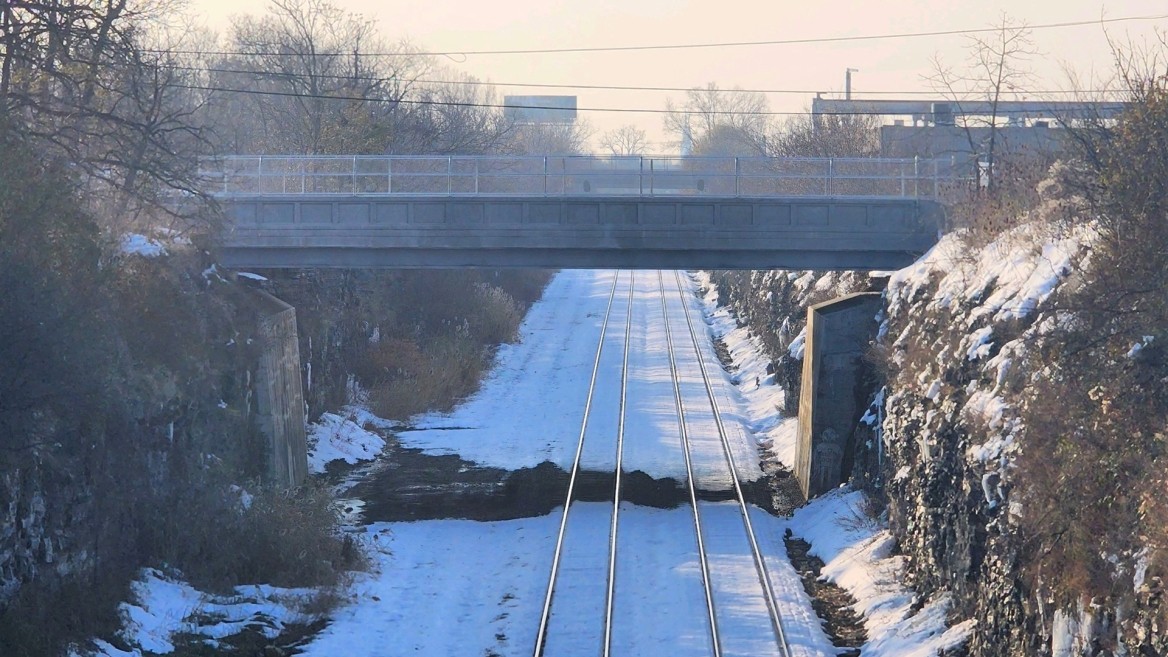Dewey Avenue Bridge

TYLin was the Prime Consultant to design the replacement of the Dewey Avenue Bridge over CSX Mainline Rail Line in Buffalo, New York.
The new Dewey Avenue Bridge over CSX Mainline Rail Line is a steel girder structure that meets current highway loads, offers safe transit for vehicular and pedestrian traffic, and improves vertical clearance for CSX freight trains.
The original concrete spandrel arch bridge was constructed in 1909, making it the oldest City of Buffalo bridge in service. It spanned over a rock cut that accommodated CSX and other rail lines. The arch abutments were constructed directly into rock to provide thrust support. The underside of the structure had suffered significant deterioration; the arch and its walls had separated from the abutment stems at both ends.
The bridge featured decorative spandrel walls with inset panels which, when combined with the structure’s age, made it eligible for inclusion on the National Register of Historic Places. TYLin provided a Findings Statement documenting the bridge’s historical aspects and the rationale for demolition relevant to its ability to safely carry traffic.
The replacement bridge features steel girders with a cast-in-place concrete deck and a decorative parapet that pays tribute to the original arch spandrel panels. To increase the vertical clearance, the bridge profile was raised more than a foot on one side. TYLin engineers designed a creative roadway approach to blend this change with the nearby driveways and street.
All construction work over the tracks was performed in the presence of a flagman and stoppable within minutes to ensure clear tracks for the eight to 10 daily trains. To address CSX’s requirement that demolition not encroach on the existing vertical clearance, the existing bridge was sliced into 17 longitudinal sections that were lifted out via rigging and a crane.
Project Highlights:
- A Memorandum of Understanding between multiple agencies was required to document the unique characteristics of the original bridge construction.
- As part of the project, watermain pipes carried by the bridge were replaced.
- TYLin progressed the project within the time constraints dictated by the BridgeNY funding program.
- TYLin also worked within the strict design and construction limitations imposed by CSX for this heavily traveled rail corridor.
- Construction occurred over seven months and required a short offsite detour.